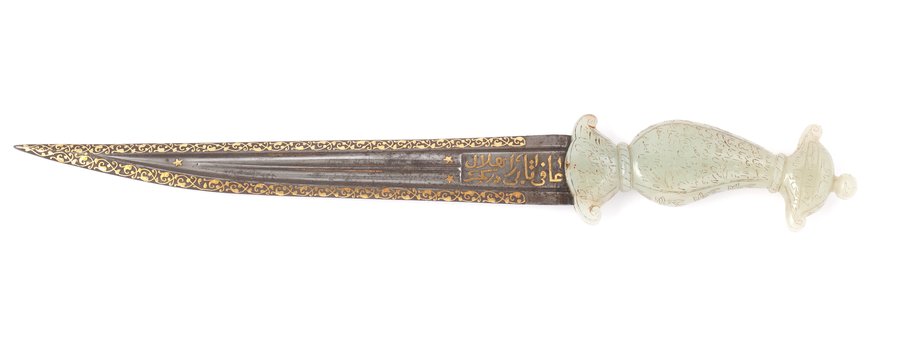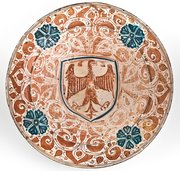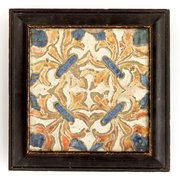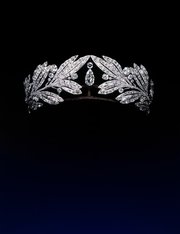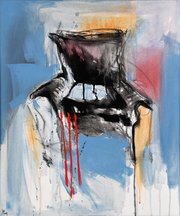
Dagger (khanjar)
Museum of Islamic Art
- Title:
- Dagger (khanjar)
- Production place:
- India
- Date:
- 1600 - 1700
- Period:
- Mughal
- Title:
- Dagger (khanjar)
- Production place:
- India
- Date:
- 1600 - 1700
- Period:
- Mughal
- Material:
- Steel, Gold, Jade
- Technique:
- Forging, Overlaying, Carving, Grinding, Polishing, Engraving
- Dimensions:
- 34.4 × 4.65 × 1.89 cm
At the Mughal court luxury weaponry made of inlaid steel, precious gems, and carved hardstones were status symbols, often awarded to particularly worthy officials and courtiers in returns to their loyalty and good services. The precious material employed for this dagger (known as khanjar), gold and a hilt made of pale green jade indicates that this was more a ceremonial object rather than an actual weapon to be used in the battle. The blade, made of steel, has been inlaid with gold using a technique known in South Asia as koftgari (lit. flame beating, from Persian). The hilt has been covered with carved inscriptions; the carving must originally have been filled with a black compound to ensure it be legible. The main inscription contains the shahada and the Throne verse (Ayat al-Kursi, Sura al Baqara, verse 255), a popular and much loved, auspicious Qur'anic passage very apt for such an object. Another carving mentions a certain Miran Muhyi al-Din, perhaps to be identified with a homonym South Indian Sufi Hasrat Miran Muhyi al-Din also praised in the poetry of Wali Dakkani (active mid-11th century AH/mid-17th century CE). The rest of the inscriptions are blessings and invocations to 'Ali, possibly hinting to the Shi'a adherence by the original owner of this dagger and its first context of use.
